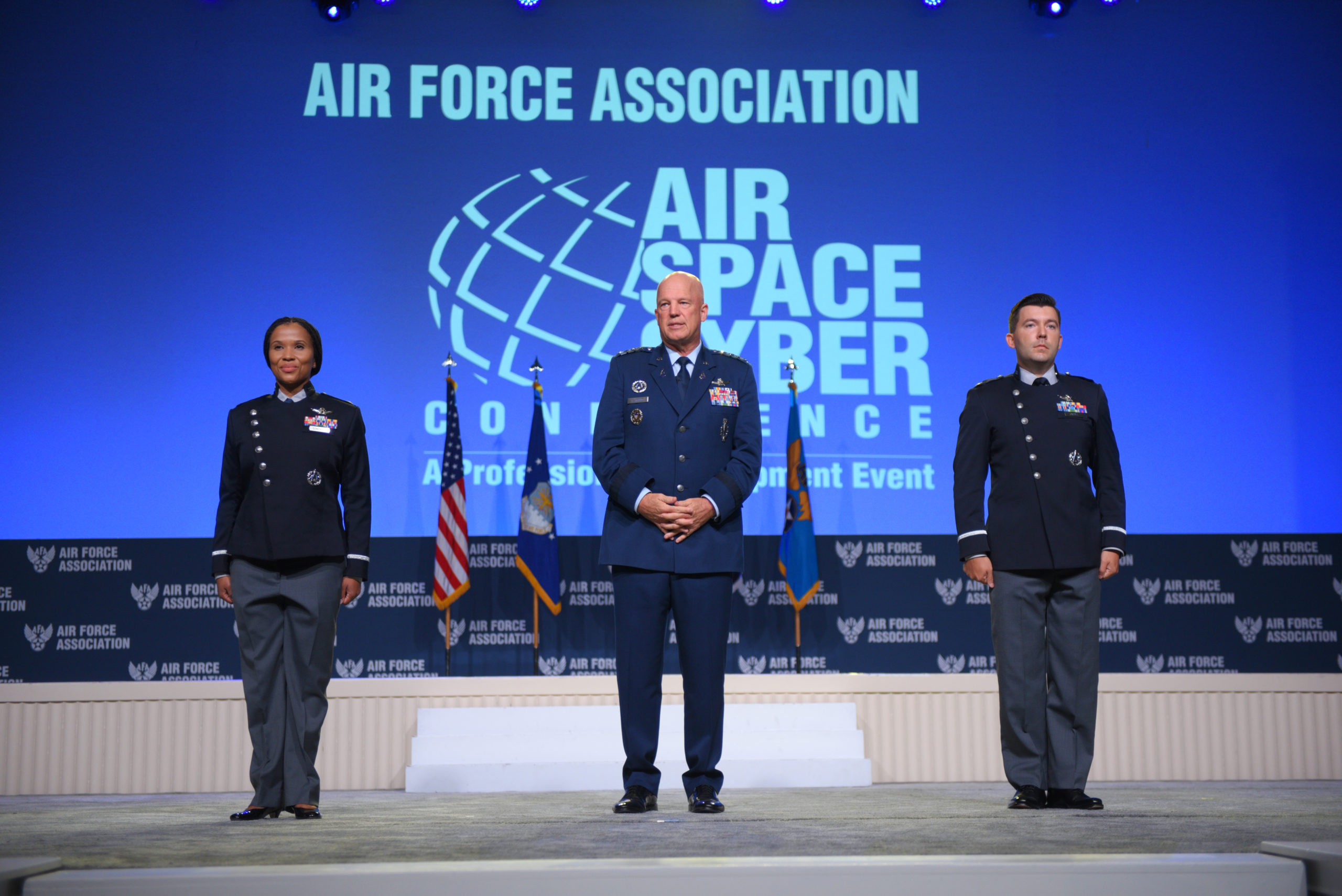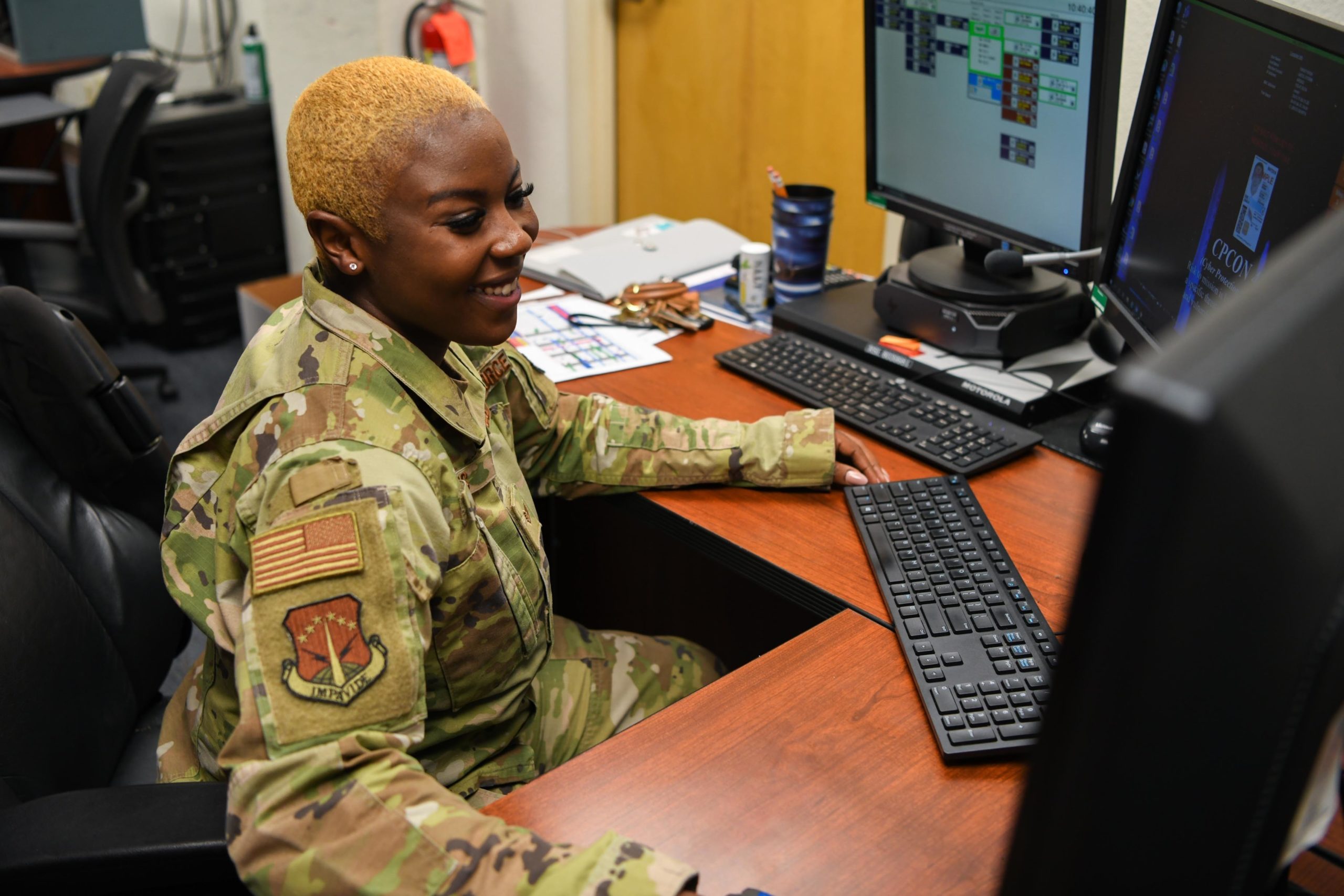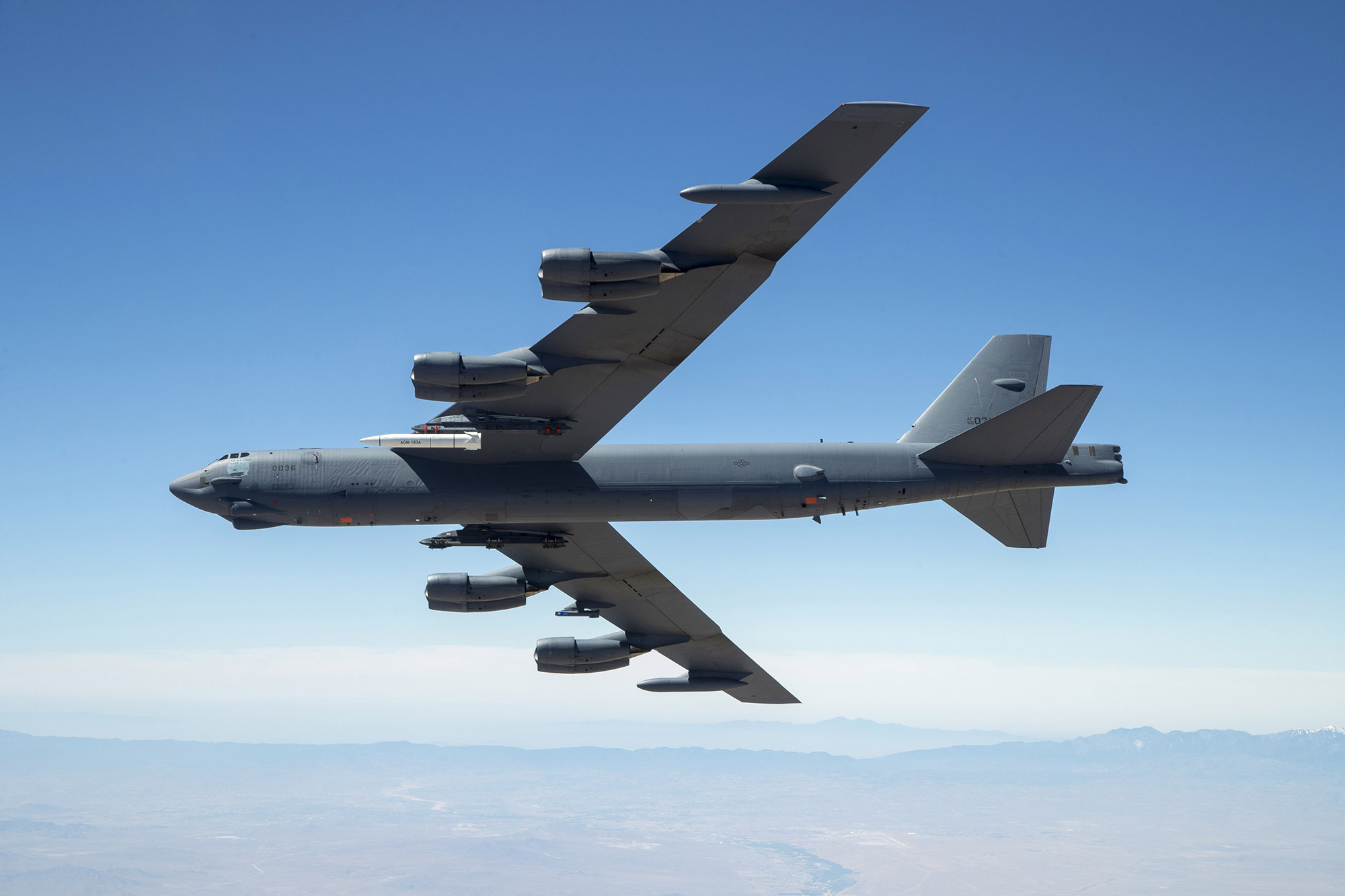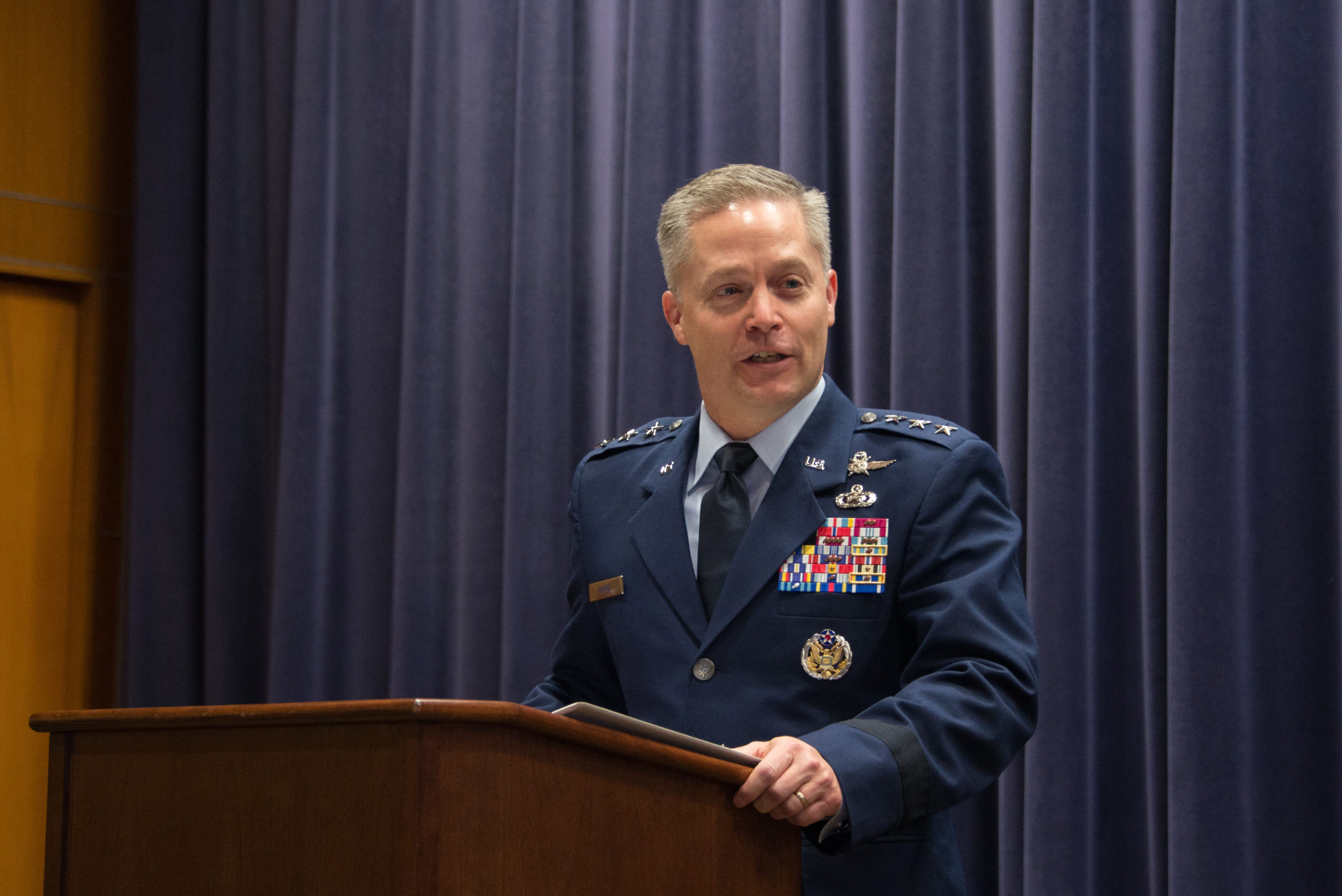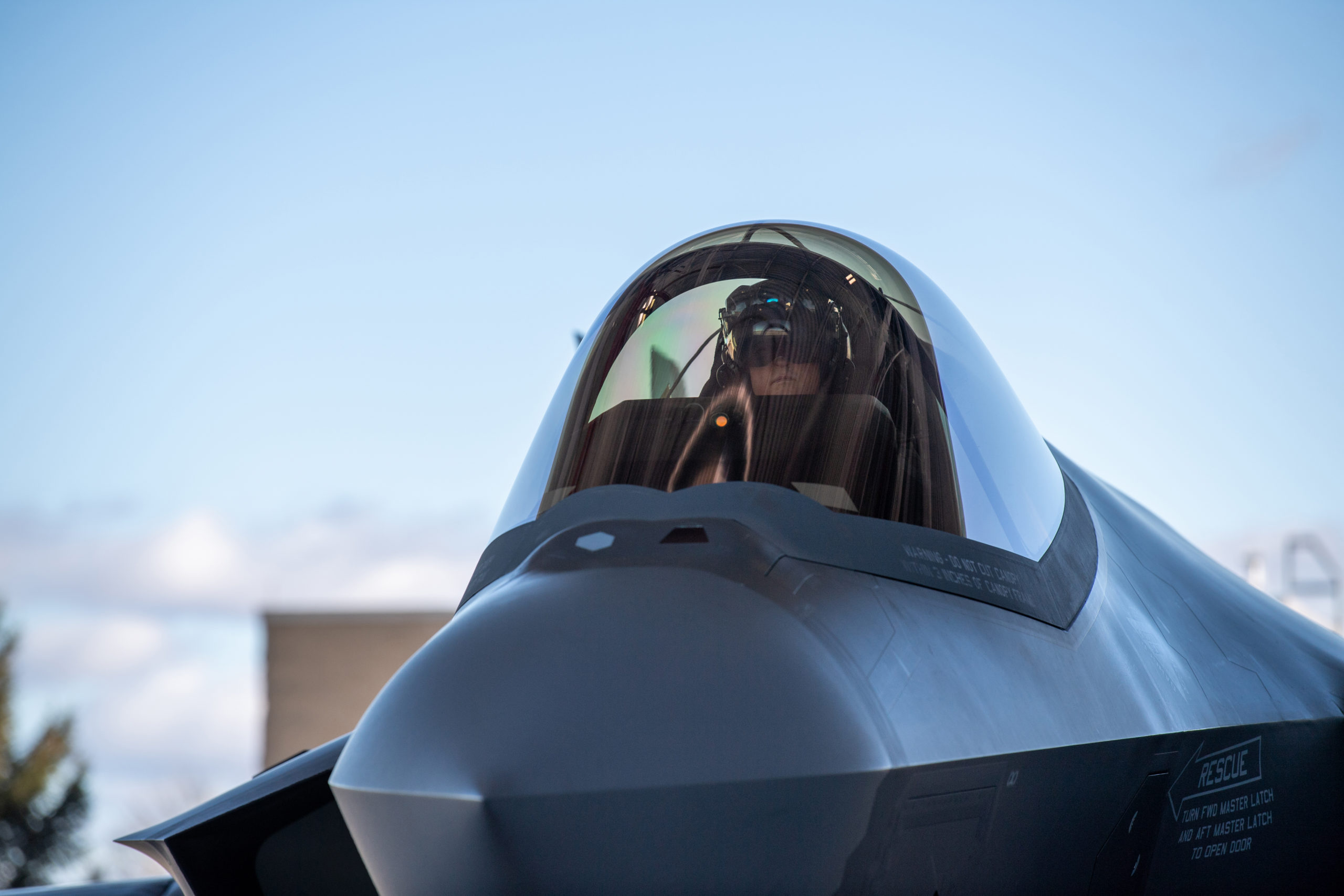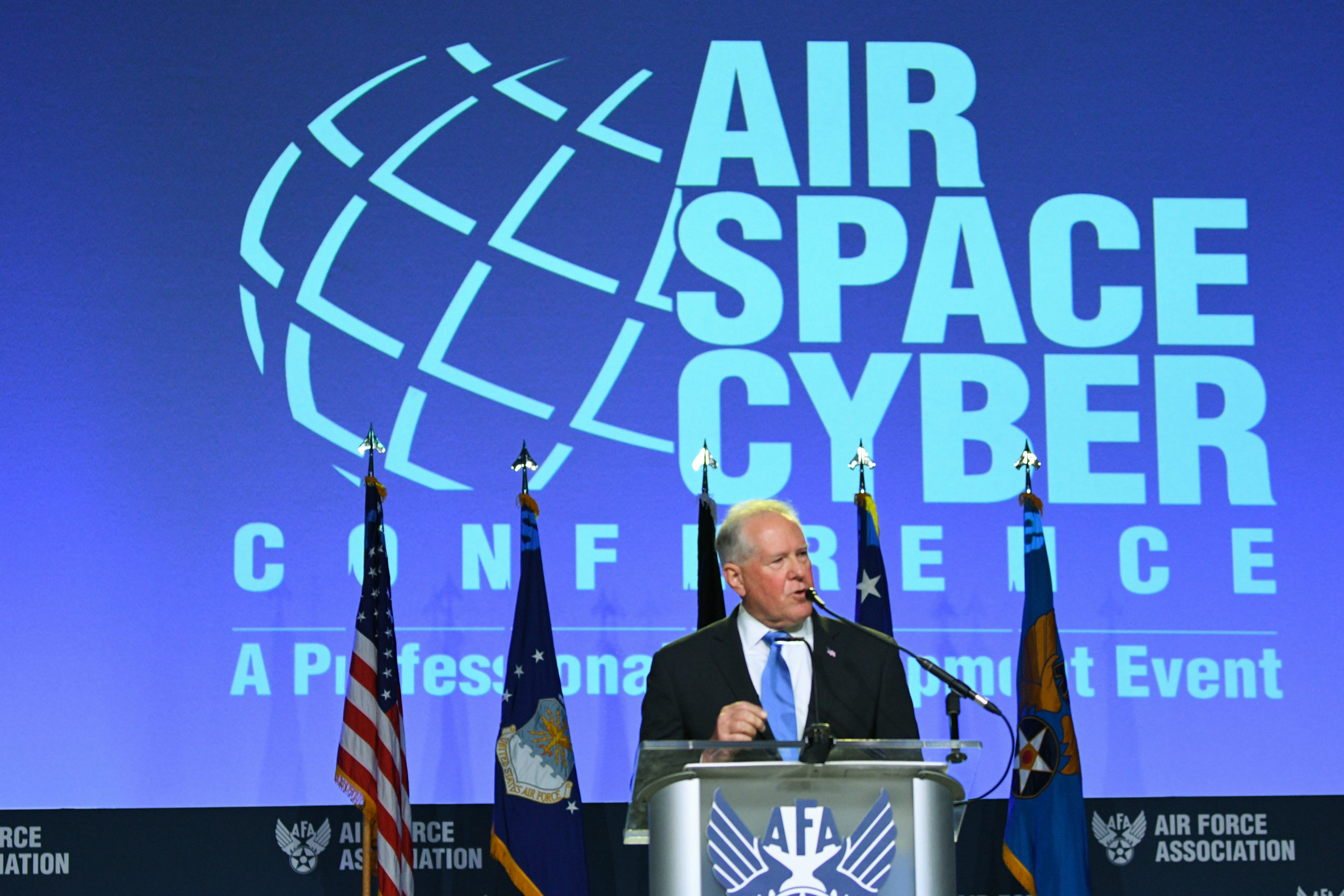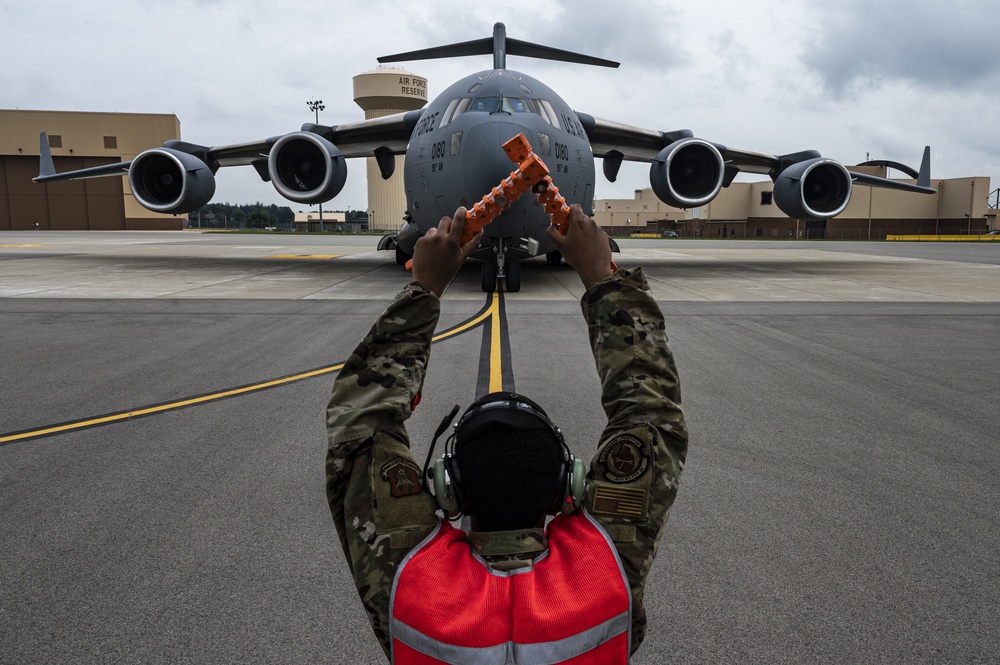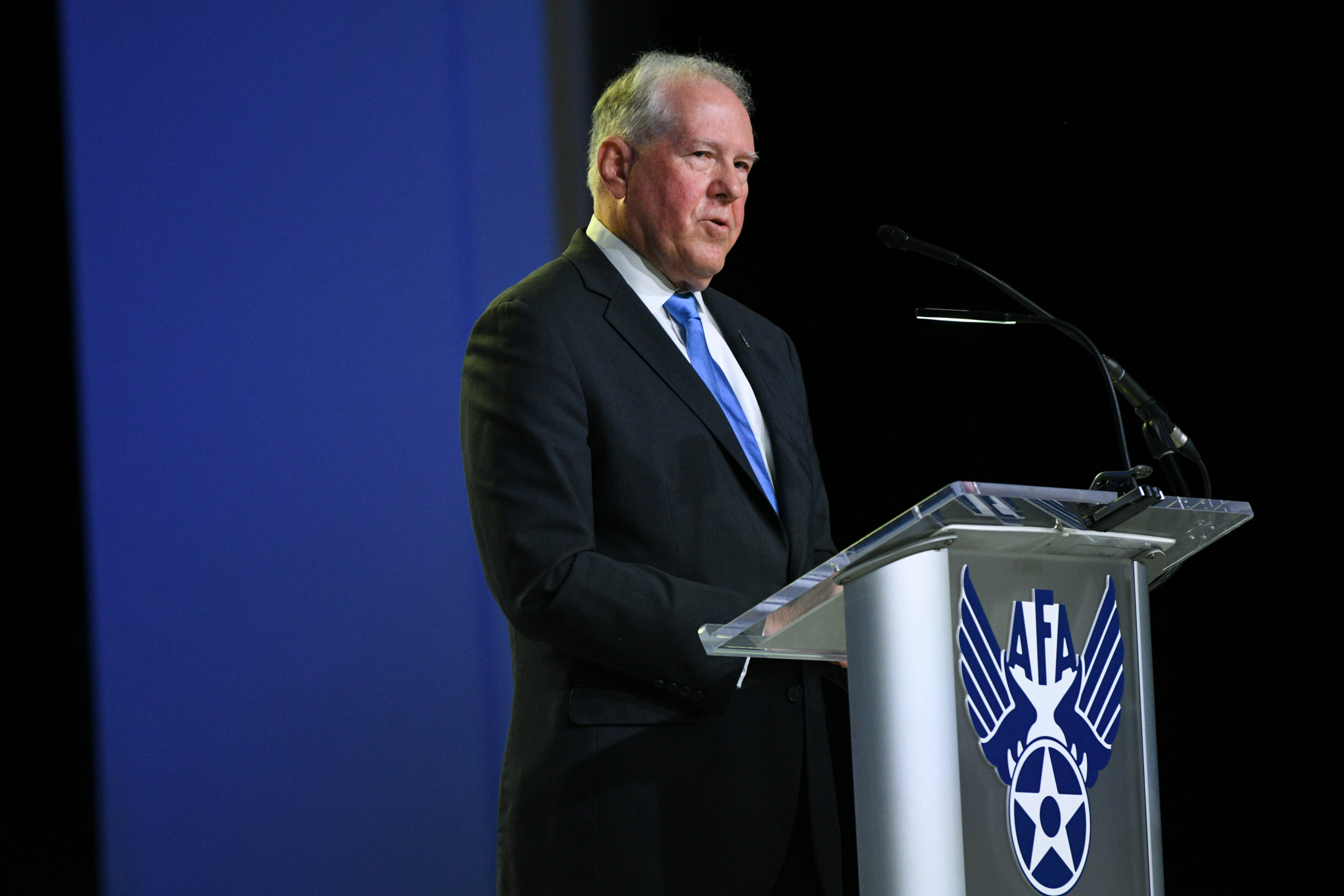The Space Force’s very first member unveiled the service’s first prototype service dress uniform Sept. 21. Its dark blue coat—almost black—with upturned collar, closes with a diagonal row of six buttons.
Chief of Space Operations Gen. John W. “Jay” Raymond brought two Guardians onstage to model the prototype during his speech at the Air Force Association’s Air, Space & Cyber Conference.
But first, Raymond announced that the USSF’s PT uniform is being wear-tested. Previewed in a video by an Air Force Academy grad who competed in track, the uniform includes black shorts with a version of the service’s delta logo in white; and a gray T-shirt bearing the stylized words “Space Force” in white on the back.
The six silver buttons on the coat prototype represent the service’s establishment as the sixth branch of the U.S. Armed Forces. A video showing some details included the buttons bearing the Space Force’s delta logo, mirror-finish U.S. pins worn on the collar, and silver braid near the cuffs.
Raymond said the service will accept “comments and tweaks” in the coming months before the uniforms go into wear testing.
For their combat uniform, Guardians will continue to wear the Operation Camouflage Pattern uniform, or OCP.
Chief Master Sgt. of the Space Force Roger A. Towberman announced enlisted rank insignia, featuring deltas and elongated hexagons—another nod to the USSF’s sixth-service status—Sept. 20.
The Space Force stood up Dec. 20, 2019, followed incrementally by its three field commands—organizational equivalents of the Air Force’s major commands—with the most recent, Space Training and Readiness Command, activating in August. Raymond called Space Force a “flat organization built for speed,” without additional command layers the likes of Numbered Air Forces.
“All the big, innovative companies said, if you’re big, you’re slow—and you’re not going to be innovative,” Raymond said.
Raymond said the Space Force now has 6,490 Active-duty Guardians, with more than 500 enlisting directly into the Space Force. This year it became the 18th member of the Intelligence Community.


